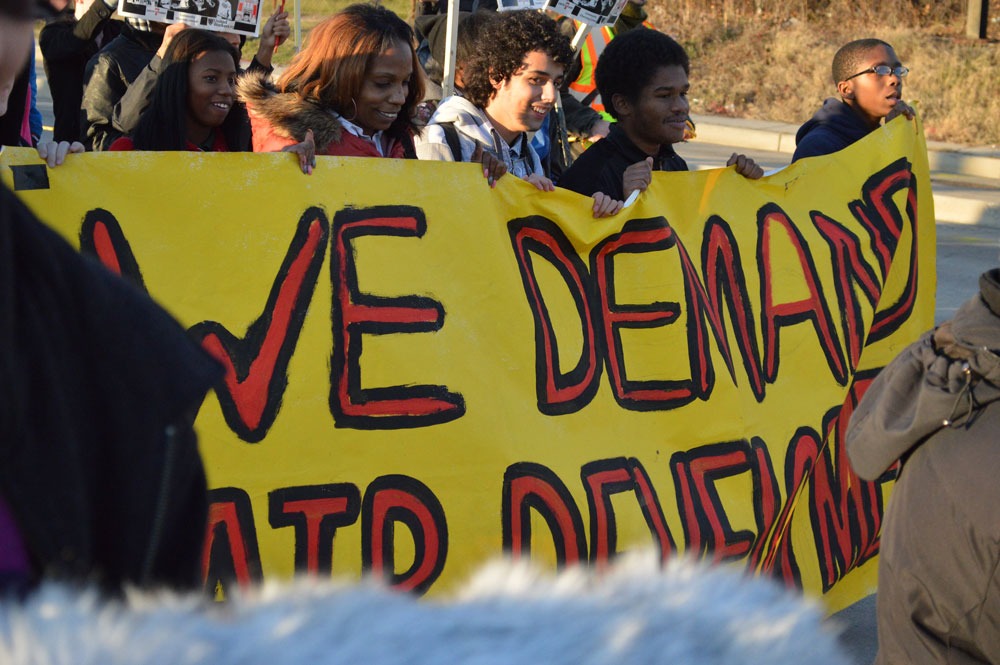
Is it possible for Baltimore, a legacy city from a bygone industrial age plagued by multiple challenges in housing, unemployment, public corruption, and crime, to revive itself through a fight to prevent garbage incineration from inundating its communities?
Recent developments suggest the answer is yes!
A community coalition that has gained in power over the past five years has recently released a far-reaching “zero waste” plan. If adapted, the plan could put the postindustrial port city of Baltimore at the center of environmental leadership.
This is a hugely hopeful sign. While of course the current pandemic may delay implementation, the possibility of a healthier post-pandemic Baltimore is clear.
It bears emphasis that Baltimore is not a wealthy city. Its poverty rate is high, and its household income is below average. It is also a majority Black city—62.5 percent, according to US census data. Too often, it is assumed that environmental leadership is a luxury of wealthy cities—the Seattles and San Franciscos of the world. (We’ll ignore for the moment that the wealth of such technology-based cities is often based on heavy environmental destruction abroad.) But Baltimore is showing that this need not be the case.
The Baltimore plan, which my colleagues and I have called “Baltimore’s Fair Development Plan for Zero Waste,” lays out the following objectives:
- Clean air: close polluting incinerator
- Clean communities: implement universal recycling and composing
- Reclaim communities: create public fund to facilitate community acquisition of vacant lots.
- Local jobs: prioritize local hiring hire for zero waste work.
- Reduce waste: ban single-use plastic and polluter subsidies.
- Build community power: commitment to fair development and promotion of community ownership of enterprises.
- City commitment: Commit to 90 percent reduction of waste in 10 years.
Our economic forecast suggests that implementing suggest an agenda would create at least 1,780 jobs (over 780 in processing and more than 1,000 in manufacturing). The public health benefits of this shift—and the economic benefits—could also be substantial. At present, Baltimore has one of the nation’s highest rates of respiratory illness. We estimate that Baltimore residents spend $55 million a year on health costs related to burning trash alone.
When the report was first publicly presented to a gathering of hundreds on February 22nd, the report got an enthusiastic response. The Baltimore Sun reported that “On the City Council, the plan has the support of at least the half a dozen members” who attended the launch event. Less than two months later, on April 6th, the Zero Waste Plan was unanimously adopted by City Council. The current coronavirus pandemic, as well as continuing court challenges, mean implementation remains a challenge—but Baltimore community activists are optimistic about their chances.
Baltimore Neighbors Challenge an Incinerator
The movement toward the zero-waste campaign began with a five-year neighborhood-based fight against garbage incineration that started in the community of Curtis Bay, a neighborhood at the southern tip of the city. Curtis Bay was selected 100 years ago as the dumping grounds for the rest of the city and has borne the brunt of industrialization ever since: air pollution from hazardous waste incinerators, heavy-load trucks, and dust from coal heaps.
This industrial waterfront, a short hop from downtown Baltimore, is among the most polluted zip codes in the country. During a recent presentation, Carlos Sanchez, a 15-year-old community organizer, asked everyone to hold their breath for 15 seconds. Each second, he said, stands for a year in life-expectancy gap between the average Baltimorean and neighborhood residents, who breathe in emissions daily from coal piles blowing dust and hazardous waste incinerators spreading chemical pollution.
Not Going to Take It Anymore: The Battle against Answers
In 2013, a private firm named Energy Answers proposed to build a 4,000-ton per day garbage incinerator on a 90-acre industrial site in the heart of Curtis Bay. The plan had the full support of the city, and state agencies, private sector and had major public institutions lined up to purchase electricity from the facility. Youth activists who took petitions from door to door were told, “Don’t bother, nothing is going to change.”
Despite the array of forces against them, the community mobilized. No one predicted the depth and breadth of the response from Curtis Bay youth, or the help from teachers or the organizing mettle of United Workers, a nonprofit community group based on St Paul and 27th Streets in north Baltimore with an integrated vision of housing, good jobs, economic growth, and environmental preservation. Nor did anyone anticipate the culture of commitment to the mixed race, low-income community developed at Ben Franklin High School, a high school with its own community development corporation and leadership training. After the plant was defeated, one skeptical neighbor came to a meeting and congratulated the young people of the community.
The coalition that defeated the incarcerator was broad and deep. It included current and former high school students attending nearby Towson State University. The Free Your Voice video made by students was a critical tool used in an effective strategy to alert potential customers for the electricity from Energy Answers’ plant that they had been hoodwinked into buying “dirty energy.” One by one, museums, school districts, and city agencies cancelled their purchase agreements. The plant’s groundbreaking was delayed long enough for state officials finally to pull the permit—following citywide demonstrations, sit-ins at the Maryland Department Environment, and arrests of activists.
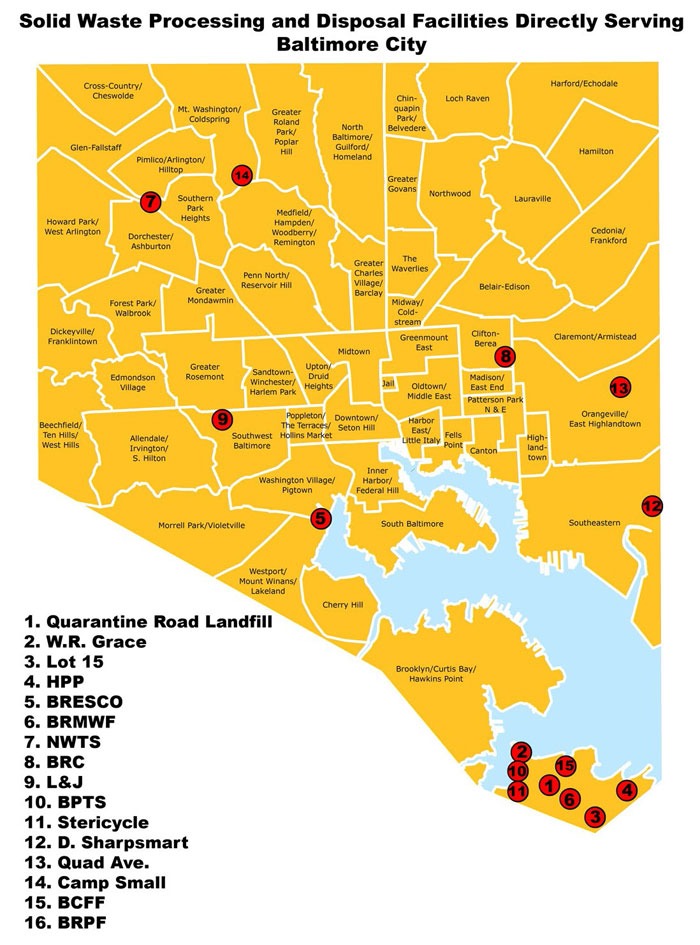
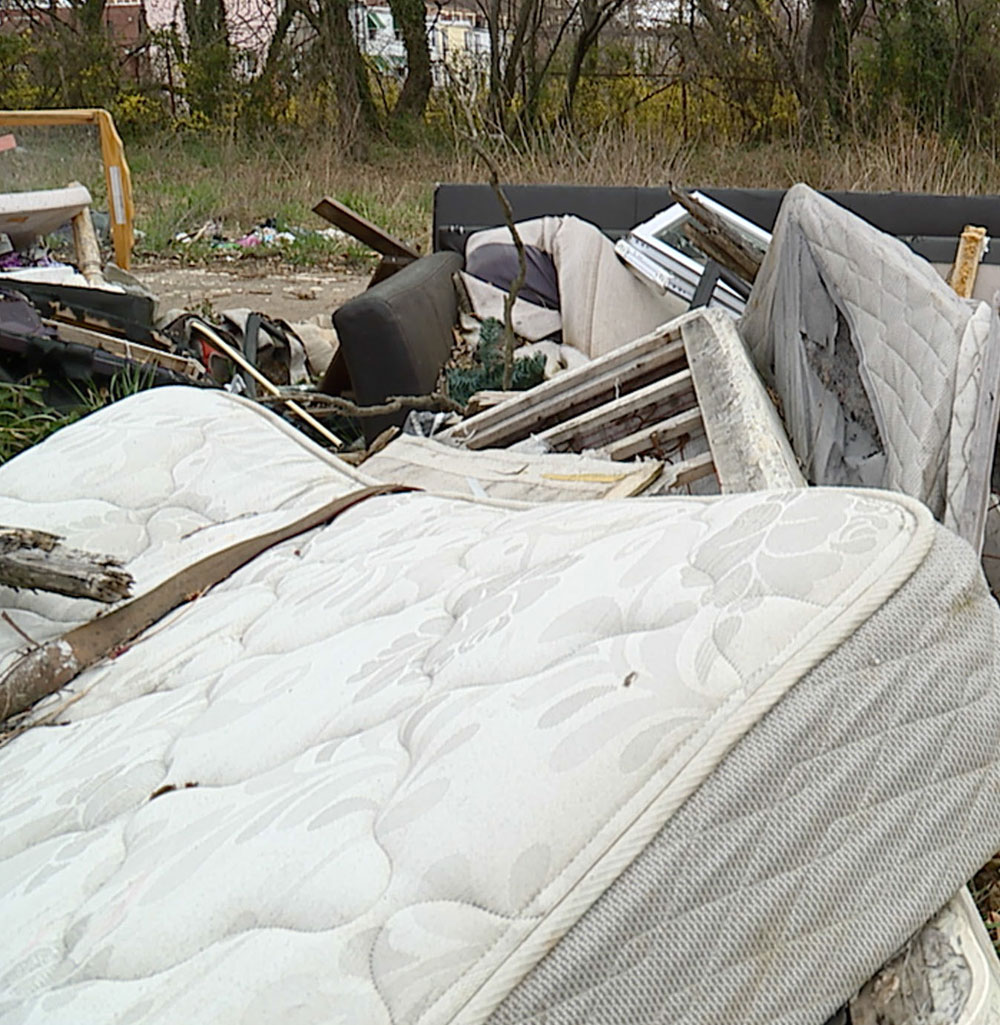
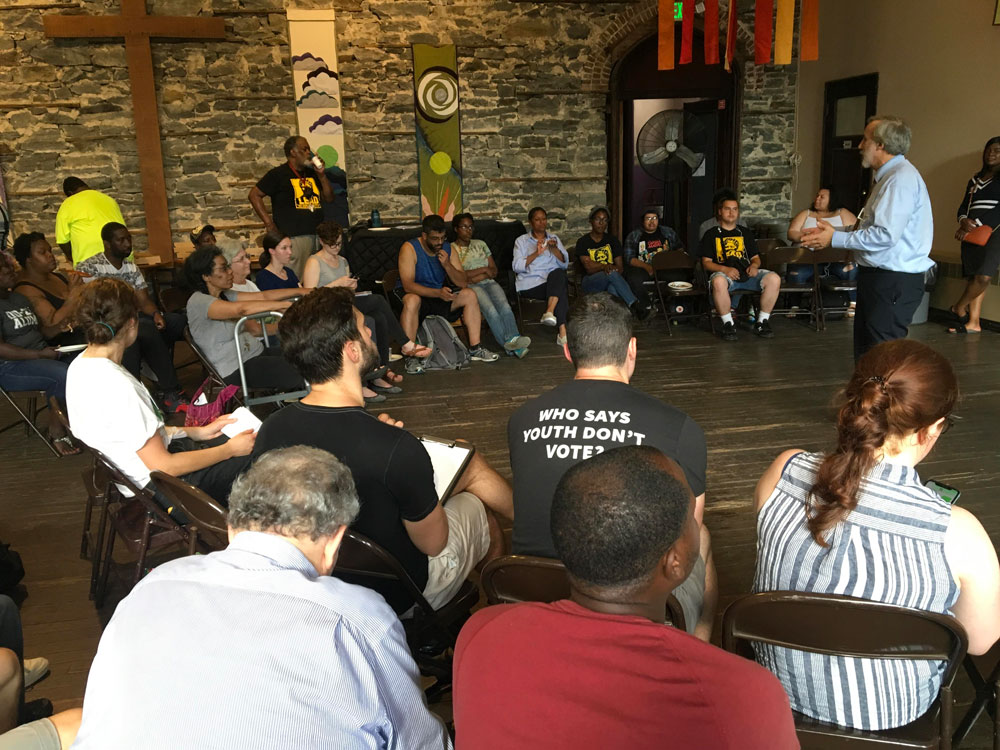
Local leadership emerged from Curtis Bay:
- Rodette Jones, a retired Baltimore police dispatcher, took charge of the Filbert Street Community Garden and made it a vital community asset for children and residents.
- Marvin Hayes, a youth activist, took charge of the Baltimore Compost Collective, which built a compost pad adjacent to the garden. The Collective gathers food discards from households and businesses. It then turns these waste products into topsoil that feeds the fruit trees, vegetable gardens, and livestock at the Garden. Hayes won recognition as an Open Society Foundation Fellow.
- Father Ty Hetherington was liaison with the community and the Catholic Archdiocese of Baltimore and helped explore possible uses of church land and buildings for potential reuse and composting enterprises.
- Destiny Watford, a Ben Franklin graduate and political science graduate at Towson State, became the face and voice of the Curtis Bay youth and won the coveted Goldman Environmental Award in 2016. Her prize money went right back into community organizing by United Workers.
- Shashawndra Campbell and Meleny Thomas became youth leaders and liaisons to the community. Campbell, at a City Council hearing, told members to “just do your job” after previous speakers pointed out the public health dangers from the 30-year-old downtown incinerator.
- Charles Graham, a Ben Franklin grad, wrote inspiring poetry to accompany a tarantella of youth rap videos that went viral.
- Gwen Dubois, representing the local chapter of Physicians for Social Responsibility, had a steady presence that lent medical and scientific information to organizing efforts.
Other well known, homegrown Zero Waste enterprises in the city gave further credence to alternative ways to look at “waste”: The Loading Dock, which sells used building materials; Humanim, which recovers and sells building materials recovered from abandoned homes; and Second Chance, which sells products it deconstructs at a 300,000-sq.-ft. warehouse donated by the city.
Resources from outside the city also poured in. Energy Justice Network (EJN), based in Washington DC and Philadelphia, prepared resolutions. Its director, Mike Ewall, drafted the Baltimore Clean Air Act, which the City Council passed in 2019 unanimously even as the city’s Department of Public Works claimed the incinerator was needed until 2040. The Act bans any waste incineration after September 2020 if facilities cannot meet best available control technology or switch to non-incineration techniques for handling hazardous waste and solid waste.
Sign up for our free newsletters
Subscribe to NPQ's newsletters to have our top stories delivered directly to your inbox.
By signing up, you agree to our privacy policy and terms of use, and to receive messages from NPQ and our partners.
ENJ staffer Dante Swinton dove headlong into breaking the commonly held myth that low-income communities of color do not recycle. With private foundation support, he worked to get the city to provide recycling carts to households and paid for block captains to monitor recycling efforts in three communities surrounding the existing downtown incinerator. Recycling rates rose to over twice the 14- to 19-percent rate at which the rest of the city was recycling. Further, Swinton and Ewall documented the $55 million annual payout by the city and residents as a result of the downtown incinerator, including emergency room visits by asthma and cancer patients.
The Environmental Integrity Project (EIP), also based in DC, provided ongoing legal assistance. The Institute for Local Self-Reliance (ILSR), the national nonprofit think-tank where we work, has had a steady long-term presence in the community providing information on businesses that could be attracted to the city, and how the city could localize its recycling system to gain efficiency, lower costs, and increase employment. ILSR also helped the Filbert Street Garden build its compost pad, which it needed to starting up the compost collection enterprise.
The Global Anti-Incineration Alliance (GAIA) provided information on similar battles against incinerators in other cities. Most critically, GAIA helped raise funds from foundations to support United Workers as well as other groups fighting incinerators in other cities. United Workers is using this support to develop a community land trust, as it seeks control of the 90-acre site formerly claimed by the Answers incinerator. The Fair Development Land Trust grew in prestige as it helped pass the Housing Trust increase in real estate transaction tax to feed a $20 million fund for citywide affordable housing development.
The resulting Fair Development Zero Waste Plan is a critical resource to oppose a plan supported by the city’s public works agency, which advocates for continued use of the downtown incinerator through 2040. The plant, we are told, is needed so the city won’t have to ship waste out of the city and burden other communities. Ironically, the downtown incinerator spreads dangerous air emissions to communities for hundreds of miles surrounding Baltimore. The “landfill in the sky” and the wind makes neighbors of us all.
Greg Sawtell and Todd Cherkis of United Workers approached the waste and recycling issues with the same basic principles of equity, transparency, and local decision-making that they approached economic growth, control of land and community power. For their focus on recycling and waste, United Workers hired Zero Waste Associates (ZWA) and ILSR to prepare the technical aspects of the Zero Waste Plan. United Workers and Fair Development Housing Trust authored the final report.
Movement toward a Citywide Plan
There is no simple way to put together a community-based zero waste plan. To get there required engaging stakeholders and identifying community needs; fears; frustrations; and most important, their specific suggestions for change. Scores of meetings took place in accordance with the observation by Zero Waste campaigner Rossano Ercolini, also a winner of the Goldman Prize for Environmental Excellence in Italy, that “the path to Zero Waste is paved with many, many small meetings.” At these meetings, the city’s often-neglected neighborhoods identified their priority needs.
Chief among these, particularly in south Baltimore, was relief from open dumping of demolition and construction waste. Communities inspired by the Filbert Street experience, church groups and secular groups, sought to replicate it in their communities. The Zero Waste Plan thus focuses on areas not traditionally of concern to solid waste management planning, or even zero waste planning.
Principles and Timeline
First principles in the plan are as follows:
- create less waste
- build community power to assure fair development and clean communities
- just transition to Zero Waste, including workers displaced by closed incinerators
- waste reduction
- no incineration
- $40 million in public funds for housing renovation
- deconstruction and reuse enterprises
- more jobs
The Fair Development Zero Waste Plan calls for 1,800 new jobs in a transition that will take two to three years.
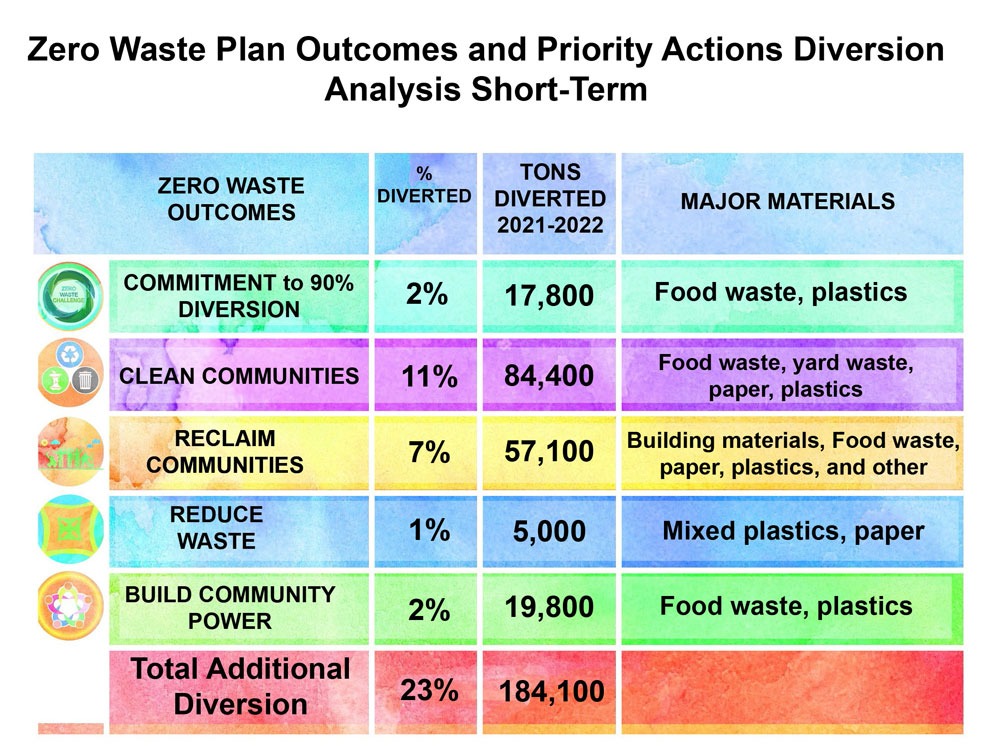
Focus areas for immediate attention are presented in the chart above. The timeline for action was a critical component of the study as the DPW analysts maintain that the city cannot possibly divert enough mayoral form the waste stream quickly enough to shut the incinerator down any time soon.
The Fair Development Plan foresees a reduction of 184,000 tons for the waste stream as the basis for shutting down the incinerator within a few years as the recycling and composting facilities are built in the city. The Fair Development Plan includes the unusual recommendation that they city consider contracting with a mission-driven recycling organization to work with the DPW.
Next Steps
The Fair Development Zero Waste Plan was publicly presented on February 22, 2020, to a standing-room-only audience. No less than six city council members were present, including Council President Brandon Scott and leading veteran councilmembers Mary Pat Clarke and Ed Reisinger.
The audience heard a detailed technical report from ZWA and ILSR, videos of accomplishments in other cities, and well-prepared presentations by United Workers’ team, filled with emotion and passion from youth activists.
All the City Council members present also made statements and pledged to submit a Council Resolution adopting the fair development zero waste plan.
At the same time, the city has faced legal resistance. In March 2020, US District Court of Maryland Judge George Russell invalidated a section of the city’s 2019 clean air act, which had mandated that a city ban on waste incinerators go into effect in September 2020. On April 6th, however, Baltimore City Council voted unanimously to appeal that decision based on federal precedents in Pennsylvania that allow for stricter local standards. At the same meeting, it also unanimously voted to approve the Zero Waste Plan.
Independent of court actions and appeals, with the city shut down to the coronavirus, action will surely be delayed. Organizers had envisioned swift implementation; we will have to see how things play out. The city primary elections had been in full swing, with the Democratic Party voting this spring for a new mayor and city council. Elections, which had been scheduled for April 28th, have been pushed back to June 2nd.
Still, the coalition is optimistic. Final implementation of the plan may be delayed by court battles and the pandemic, but the Baltimore community has come a long way—and there is no turning back now.










